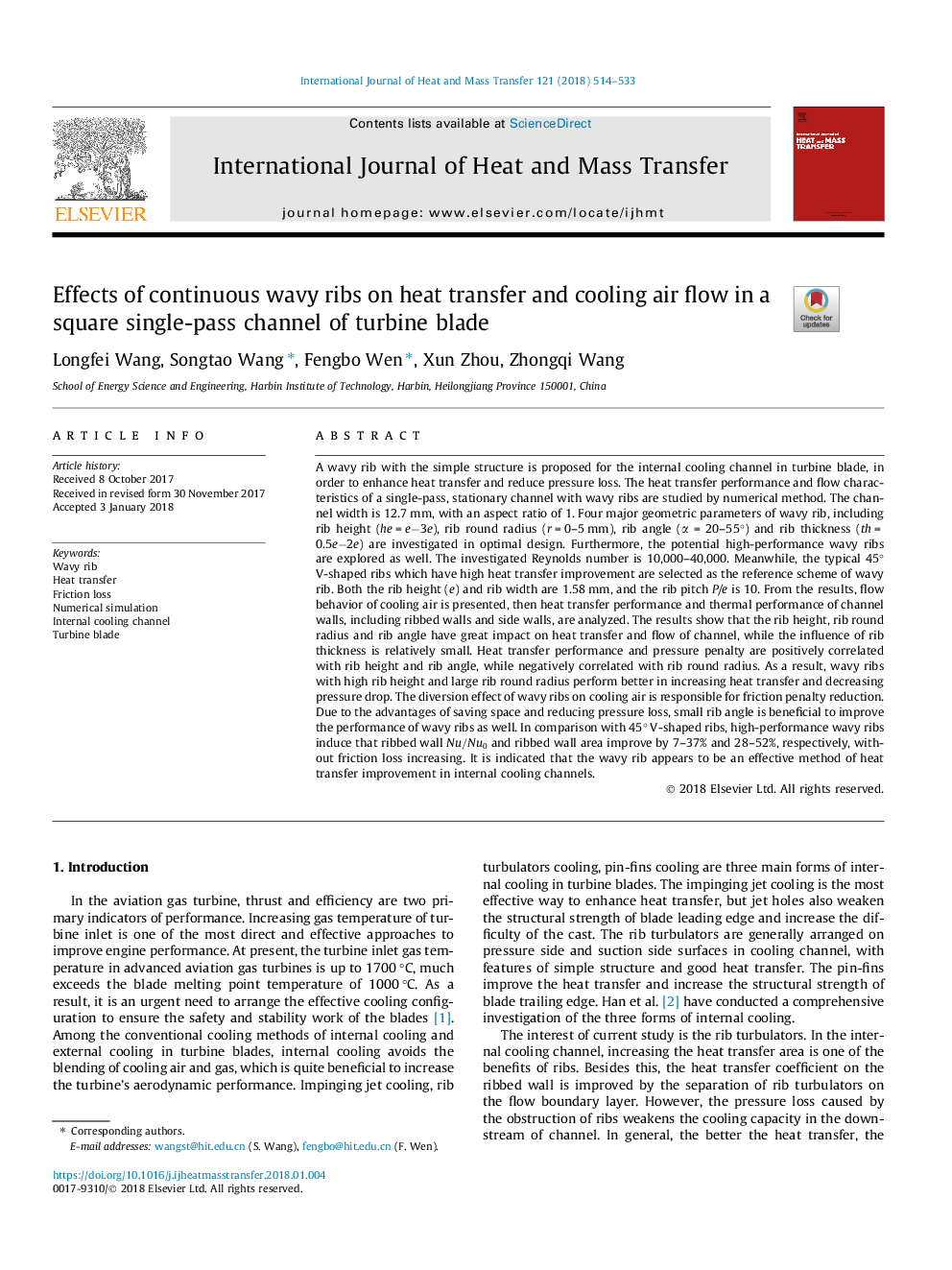| Article ID | Journal | Published Year | Pages | File Type |
|---|---|---|---|---|
| 7054491 | International Journal of Heat and Mass Transfer | 2018 | 20 Pages |
Abstract
A wavy rib with the simple structure is proposed for the internal cooling channel in turbine blade, in order to enhance heat transfer and reduce pressure loss. The heat transfer performance and flow characteristics of a single-pass, stationary channel with wavy ribs are studied by numerical method. The channel width is 12.7â¯mm, with an aspect ratio of 1. Four major geometric parameters of wavy rib, including rib height (heâ¯=â¯eâ3e), rib round radius (râ¯=â¯0-5â¯mm), rib angle (α = 20-55°) and rib thickness (thâ¯=â¯0.5eâ2e) are investigated in optimal design. Furthermore, the potential high-performance wavy ribs are explored as well. The investigated Reynolds number is 10,000-40,000. Meanwhile, the typical 45° V-shaped ribs which have high heat transfer improvement are selected as the reference scheme of wavy rib. Both the rib height (e) and rib width are 1.58â¯mm, and the rib pitch P/e is 10. From the results, flow behavior of cooling air is presented, then heat transfer performance and thermal performance of channel walls, including ribbed walls and side walls, are analyzed. The results show that the rib height, rib round radius and rib angle have great impact on heat transfer and flow of channel, while the influence of rib thickness is relatively small. Heat transfer performance and pressure penalty are positively correlated with rib height and rib angle, while negatively correlated with rib round radius. As a result, wavy ribs with high rib height and large rib round radius perform better in increasing heat transfer and decreasing pressure drop. The diversion effect of wavy ribs on cooling air is responsible for friction penalty reduction. Due to the advantages of saving space and reducing pressure loss, small rib angle is beneficial to improve the performance of wavy ribs as well. In comparison with 45° V-shaped ribs, high-performance wavy ribs induce that ribbed wall Nu/Nu0 and ribbed wall area improve by 7-37% and 28-52%, respectively, without friction loss increasing. It is indicated that the wavy rib appears to be an effective method of heat transfer improvement in internal cooling channels.
Related Topics
Physical Sciences and Engineering
Chemical Engineering
Fluid Flow and Transfer Processes
Authors
Longfei Wang, Songtao Wang, Fengbo Wen, Xun Zhou, Zhongqi Wang,
